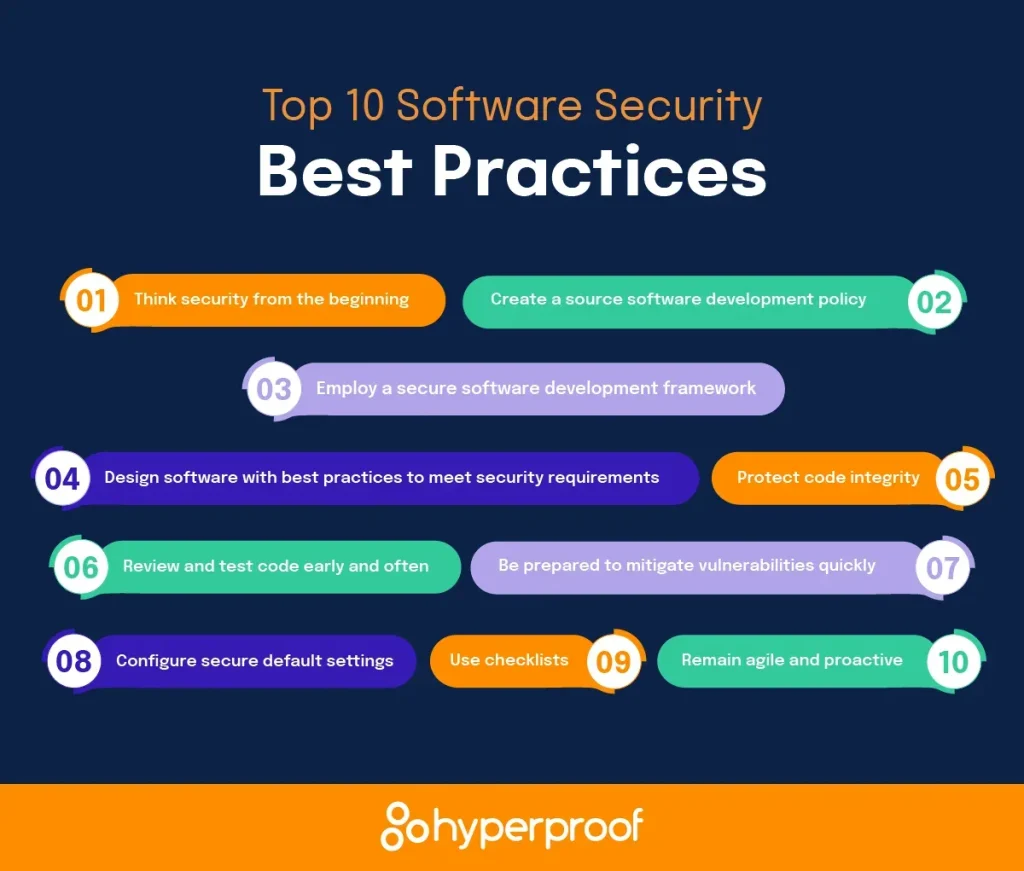Software Security Best Practices are essential for building trustworthy software in today’s complex environments. As applications grow with cloud-native services, APIs, and mobile clients, these practices support robust application security and safer delivery. From secure coding standards to threat modeling, teams can reduce risk without sacrificing velocity. Vulnerability management and DevSecOps bring security into the daily workflow, enabling early detection and rapid remediation. By combining design discipline, testing rigor, and ongoing governance, organizations can improve resilience and trust.
Viewed from a broader lens, the topic centers on integrating security into the secure software development lifecycle and broader cyber defense strategy. A defense-in-depth mindset guides architecture, automated checks, governance, and risk-based decision making across teams and releases. Practically, organizations emphasize threat-informed design, continuous verification, SBOM-driven supply-chain hygiene, and automated quality gates to protect data and APIs. By framing security as a collaborative discipline, teams improve resilience without slowing innovation. In this way, security becomes a measurable, repeatable practice that supports trust, compliance, and sustainable velocity.
Software Security Best Practices in Modern Development: A Practical Guide to Threat Modeling, Secure Coding, and DevSecOps
Software Security Best Practices are not a luxury; they are a business imperative for modern applications. In practice, applying these principles starts with a rigorous focus on application security, ensuring that secure coding principles are embedded in every line of code and that threat modeling informs architectural decisions from the outset. By weaving defense in depth, security testing into the development lifecycle, and the cultural shift toward DevSecOps, teams can reduce risk without sacrificing velocity, delivering more trustworthy software to users and partners.
A concrete way to operationalize this approach is to design a threat modeling workflow that maps assets and data flows, identifies threats (using STRIDE as a framework), and prioritizes mitigations that balance risk with cost. Integrating secure coding practices—such as input validation, proper error handling, and robust authentication—into CI/CD pipelines creates secure defaults and faster remediation. Simultaneously, adopting an ongoing vulnerability management mindset, with SBOM maintenance and software composition analysis (SCA), helps guard against risky dependencies and keeps third-party components in check while enabling rapid delivery.
Threat Modeling and Vulnerability Management: Driving Continuous Application Security
Threat modeling is more than a one-time activity; it should be a continuous discipline that informs architecture, design, and implementation. By repeatedly mapping assets, data flows, and trust boundaries, teams can surface threats early and align mitigations with business goals. In this context, application security benefits from a tight coupling of threat modeling with secure coding practices, ensuring that the most probable attack paths are mitigated before code is written and third-party risks are evaluated through ongoing vulnerability management.
A practical roadmap combines static analysis (SAST), dynamic testing (DAST), and software composition analysis (SCA) within a DevSecOps-enabled pipeline. This integrates vulnerability management into daily work, enabling automated policy enforcement, secure defaults, and reproducible builds. By monitoring security metrics, maintaining governance, and rehearsing incident response, organizations can detect and respond to threats quickly while preserving delivery velocity and maintaining trust across customers and stakeholders.
Frequently Asked Questions
How do Software Security Best Practices shape threat modeling and secure coding within a DevSecOps workflow?
Software Security Best Practices provide a framework for integrating threat modeling and secure coding into the development lifecycle. Start with asset definition and data-flow mapping for application security, then use STRIDE to surface threats. Incorporate threat modeling as a continuous activity in a DevSecOps pipeline, and embed secure coding principles—input validation, parameterized queries, robust authentication, proper error handling—into engineering standards. Guardrails in CI/CD enforce secure defaults, while regular security testing (SAST, DAST, SCA) runs on every build. Measure progress with security metrics to balance velocity and risk.
What is the role of vulnerability management within Software Security Best Practices for maintaining secure applications?
Vulnerability management is a core element of application security and Software Security Best Practices. Maintain an up-to-date Software Bill of Materials (SBOM), regularly scan dependencies with Software Composition Analysis (SCA), and adopt a patching policy aligned with release velocity. Integrate vulnerability testing into CI/CD (SAST, DAST, dependency checks) and enforce remediation through automated policy checks in DevSecOps. Establish governance for licensing, monitoring, and verifiable artifacts to reduce supply-chain risk and improve overall security posture.
| Topic | Key Points (English) |
|---|---|
| Threat Landscape |
“ |
Summary
Software Security Best Practices are essential for building secure, trustworthy software in today’s complex ecosystems. By integrating threat modeling, secure coding, supply-chain hygiene, DevSecOps, and resilient monitoring into the core development lifecycle, organizations can reduce risk without sacrificing velocity. This approach strengthens security posture, speeds up incident response, and builds greater trust from users, partners, and regulators. As teams mature, security becomes a natural accelerant for quality software and sustainable product growth.

